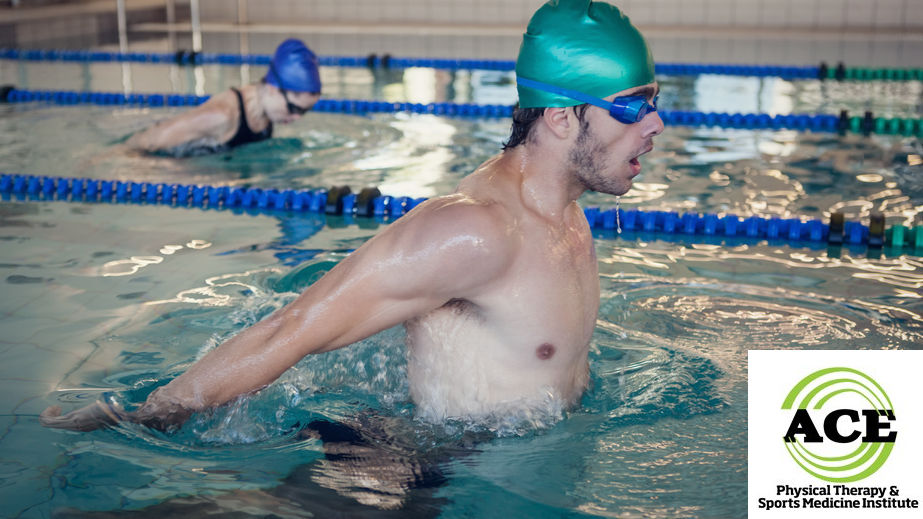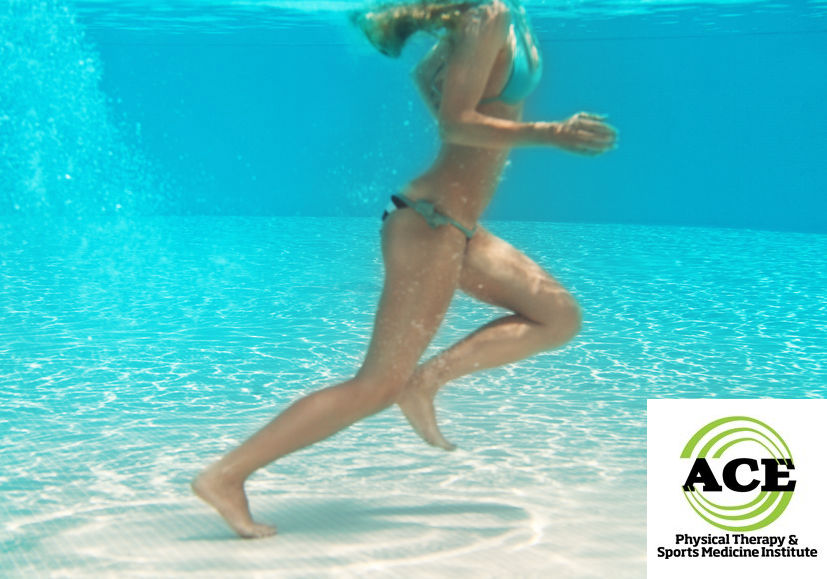Benefits of Underwater Walking

Tid Bits of Info
- Walking underwater can eliminate 50% or more of you body weight.
- Walking backwards underwater significantly increases the activity of the paraspinal muscles.
- Walking in waist-deep water can double your oxygen consumption compared to walking on a regular surface.
- Muscle activity is much higher while walking underwater due to higher water density as compared to air.
- Seek the advice of a Physical Therapist if you have pain and they might suggest exercising and walking in water.
Add a splash to your exercise routine with underwater walking. Perfect for hot sunny days, or even in the middle of winter in an indoor pool. Underwater walking can play a fundamental part of a fitness regimen for healthy individuals, but it can also benefit people living with fibromyalgia, chronic low back pain, arthritis, and other neurological or balance conditions. It improves flexibility and agility, strengthens muscles, and is a great cardiovascular workout. The buoyancy of the water supports a portion of your body weight making it easier to move in the water, but it also provides resistance to movements, which helps to strengthen muscles.
When you walk underwater, the ground counteracts the force exerted against the floor by walking. This force is termed ground reaction force and can easily be measured by a force plate. The ground reaction force has been found to differ from land walking to water walking. During water walking, the forces generated are reduced in magnitude, generated more slowly, and are transmitted over a longer time interval. In simpler terms, this means there is less joint compression and the impact strain is diminished during water walking as compared to land walking.
Water provides a natural body weight support system. It can unload your joints while you use the same gait pattern and work at a higher level than what’s tolerable on land. When a human is immersed to the umbilicus region approximately 50% of the body weight is eliminated by buoyancy. For the elderly population, this unloading factor or buoyancy can decrease the risk and fear of falling so they are able to practice walking faster and more symmetrically. Walking parameters during water walking change to slower speed, lower stride frequency, and longer stride duration than land walking which increases stability and control of movement therefore increasing safety and reducing the rate of falls.
Walking underwater also creates turbulence that can be used as a method of resistance. This resistance can be increased or decreased depending on the percentage of body weight borne across the lower limbs in proportion to the depth of immersion. Due to the drag forces in water, walking speed during water walking decreases to approximately one half to one-third land walking speed, for the same metabolic intensity. Multiple studies have investigated the characteristics of gait patterns and muscle activity in the lower extremities while walking underwater. They found that the muscle activity of the legs (specifically the tibialis anterior, vastus medialis, and biceps femoris) increased during underwater walking, and at the same walking velocity, exercise intensity underwater was significantly higher than during land walking. Therefore, the combination of resistance and buoyancy make it possible to expend high levels of energy while simultaneously reducing strain and impact force on the lower extremities.
For people living with arthritis, fibromyalgia, chronic pain, or a recently replaced joint, frequent symptoms include joint pain, stiffness, loss of physical function, increasing immobility, and muscle weakness. Aquatic walking and therapy may be a good starting place for restoring strength, range of motion, and function. Additionally, the decreased loading across the joints allows the performance of closed chain exercises that may otherwise be too difficult on land. The pressure associated with walking underwater can assist with pain relief, swelling reduction, and ease of movement.
If you experience pain or discomfort with walking on land or water, remember that you can directly access a physical therapist without a physician diagnosis or referral. This allows treatment without delay and saving precious time and money by eliminating unnecessary physician visits. By directly accessing a physical therapist you will have immediate access to care, fast relief from pain, and a quicker return back to health and work.
Next time you are in a pool, remember all the benefits of walking underwater. Consider spending time walking forward, backward, and sideways as a low impact form of exercise. As with any new exercise program, progress slowly and consider consulting your physical therapist for exercise dosage and prescription.

























